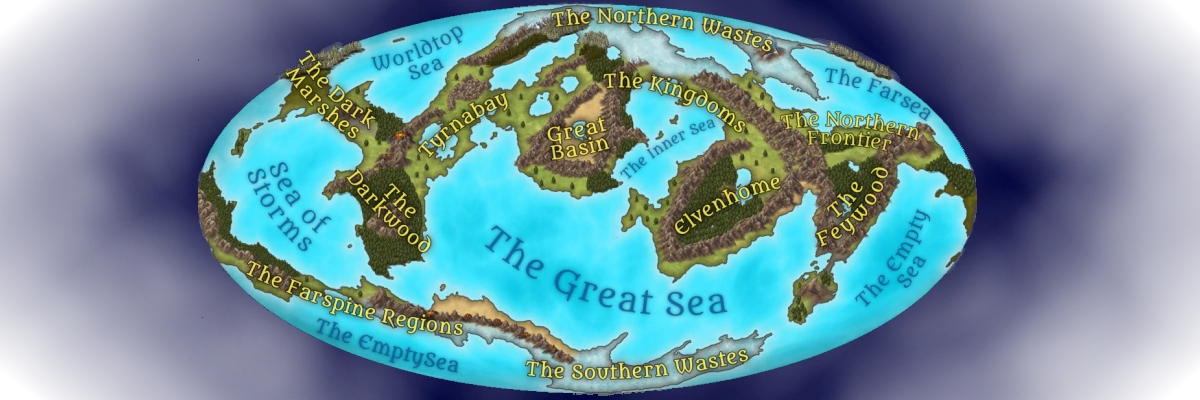Elven Steel
The Dwarves of Cartyrion have spent many millenia mining the deep places of the world, harvesting metals and other materials from the rock. They have learned over those years how to use fire and brute strength to refine and shape those metals into useful tools and deadly weapons. All the Folk know this, but only a few of them realize just how ingenious the Dwarves have become in the matter of working different metals together to achieve specific results. One of the many alloys developed by the craftsfolk of the Iron Hills Delve quickly became a favorite among the Elves of the Elvenhome, with whom the Dwarves traded extensively. In fact, demand for weapons and armor made of this alloy was at one time so high, the material came to be known as Elven Steel.
It polishes to a silvery, almost mirrorlike apperance, making it a choice for more elegant weapons and armor. Furthermore, that mirrorlike finish never rusts or fades with age, even in damp environments. The metal of Items made millenia ago with the alloy look as new today as they did when first forged.
An alloy called Lesser Elvensteel is produced in other delves where whitesteel can be found - this material has all of the properties of Elvensteel except for the mirrorlike shine. Furthermore, while it is more resistant to rust and decay than weaponsteel, it will age, becoming more brittle as time goes by.
It is suggested that weapons made from this metal are lighter and easier to use and that they do slightly more damage than their common counterparts. If the concept of "finesse weapons" exists in your game setting, consider granting it to weapons made of this material.
Armor made from it should be slightly stronger than similar armor made from common steel.
The fact that the metal does not seem to age means that many players / characters will mistake an elvensteel weapon or piece of armor for one that has been magically enhanced. While the metal does, in fact, take to magical enhancement quite easily thanks to its fine quality, it is not inherently magical itself.
Properties
The alloy called Elven Steel by the Dwarves is considerably lighter in weight than common weaponsteel. Items shaped from it are therefore easier to wield, and since it holds an edge better than common weaponsteel, blades made from it are considered more deadly. It is more resistant to stress damage, meaning armor made from it is not only lighter than common armor, but also more durable.It polishes to a silvery, almost mirrorlike apperance, making it a choice for more elegant weapons and armor. Furthermore, that mirrorlike finish never rusts or fades with age, even in damp environments. The metal of Items made millenia ago with the alloy look as new today as they did when first forged.
Production
Manufacture of Elven Steel requires that two rare and special metals be added to the traditional carbon-treated iron that weaponsteel is comprised of. The Dwarves of the Iron Hills Delve - where they were first discovered - called these two metals whitesteel and silversteel. While whitesteel has since been discovered in other Delves, Iron Hills remains the sole producer of silversteel in all of Cartyrion. The precise formulas dictating the relative quantities of the three metals, as well as the desired alloying temperature required, are closely guarded Dwarven secrets.An alloy called Lesser Elvensteel is produced in other delves where whitesteel can be found - this material has all of the properties of Elvensteel except for the mirrorlike shine. Furthermore, while it is more resistant to rust and decay than weaponsteel, it will age, becoming more brittle as time goes by.
Elven Steel Meta
Elven Steel is a fictional alloy inspired by the Mithril (or Mithral) of other fantasty RPG settings.It is suggested that weapons made from this metal are lighter and easier to use and that they do slightly more damage than their common counterparts. If the concept of "finesse weapons" exists in your game setting, consider granting it to weapons made of this material.
Armor made from it should be slightly stronger than similar armor made from common steel.
The fact that the metal does not seem to age means that many players / characters will mistake an elvensteel weapon or piece of armor for one that has been magically enhanced. While the metal does, in fact, take to magical enhancement quite easily thanks to its fine quality, it is not inherently magical itself.



I really liked the structure of the article and the different types of dwarven metal. However, I wish it wasn't mithril and you had taken a more creative approach.
Unfortunately, when creating a product for (hopefully) others to use in their game worlds, you need to provide for the many tropes that people will expect. By at least changing its name, I can reduce the obvious "tropiness", and still provide for expected mechanics. (Note: I've used the term "mithril" in some of my older articles, but do intend a global purge of the term in favor of "Elven Steel" or, sometimes "Whtemetal".
Laurels & Loot is a new, lightweight TTRPG rules system that hearkens back to the early days.
Yes, if you explain it that way, it certainly makes sense.